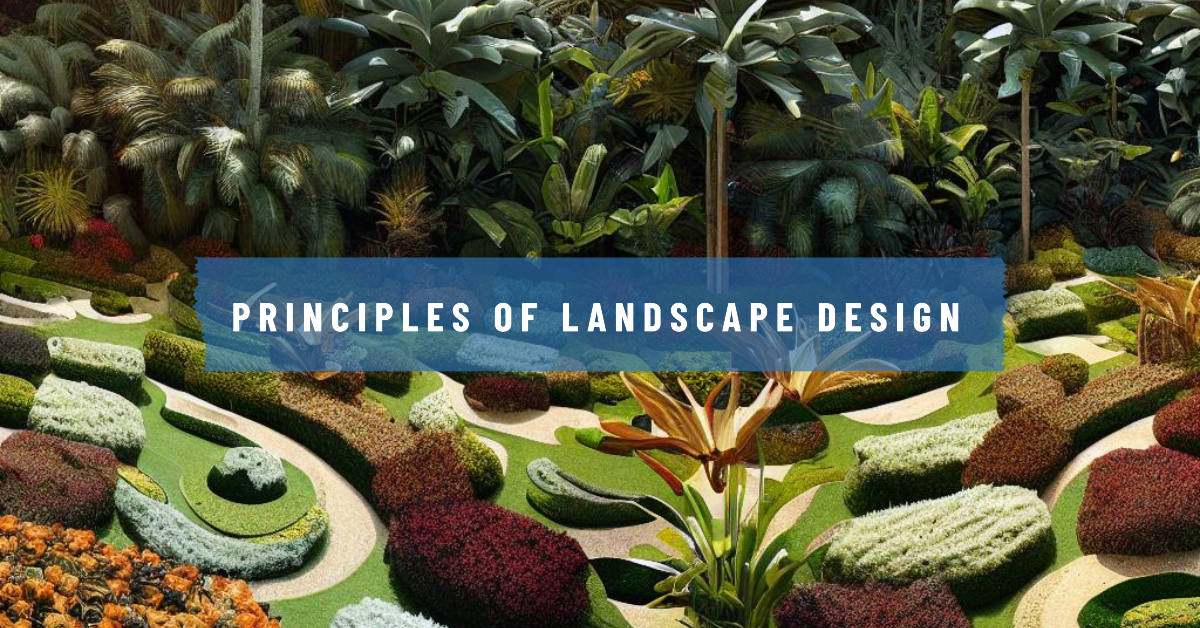Creating a harmonious and aesthetically pleasing landscape is an art that can transform your outdoor space into a sanctuary of beauty and tranquility. As a keen home gardener, understanding the principles of effective landscape design is essential for crafting an organic oasis that reflects your personal style and embraces sustainable practices. In this OrganicMotion article, we delve into the fundamental principles of landscape design to help you create a visually captivating and environmentally conscious garden.
Unity and Harmony
Achieving unity and harmony in your landscape design is crucial to creating a cohesive and visually appealing garden. Consider the following elements:
- Theme and Style: Determine the overall theme or style you want to convey, such as a formal garden, cottage garden, or modern minimalist design. Consistency in plant selection, hardscape materials, and overall aesthetics will create a unified look.
- Repetition and Rhythm: Repeating certain elements, such as plant forms, colors, or textures, throughout the garden can create a sense of rhythm and visual continuity.
- Proportion and Scale: Ensure that the size and scale of elements, such as trees, shrubs, and structures, are proportionate to the overall space to maintain balance and harmony.
Balance
Balance is key to creating a visually pleasing landscape. There are two types of balance to consider:
- Symmetrical Balance: Symmetrical balance involves creating a mirror image on either side of a central axis. This can be achieved by using identical plants, features, or structures on both sides of a garden.
- Asymmetrical Balance: Asymmetrical balance involves creating a sense of equilibrium through the careful arrangement of different elements. It relies on the visual weight, texture, and color of objects rather than their identical placement.
Focal Points
Focal points draw attention and create visual interest within your garden. They serve as the centerpiece or highlight of a specific area. Consider the following:
- Architectural Features: Utilize existing structures, such as a gazebo, pergola, or arbor, as focal points, or incorporate new elements to serve this purpose.
- Plants and Landscaping: Use specimen trees, colorful shrubs, or a vibrant flower bed to create a focal point that catches the eye.
- Water Features or Art Installations: Consider adding a water fountain, pond, sculpture, or other art installations to create a captivating focal point.
Functionality and Practicality
A well-designed landscape is not only visually appealing but also functional and practical for everyday use. Consider these aspects:
- Outdoor Living Spaces: Create designated areas for relaxation, dining, or entertaining, such as a patio, deck, or seating area.
- Pathways: Ensure clear and well-defined pathways that guide visitors through the garden and connect different areas. Consider using organic materials, such as gravel or stepping stones.
- Sustainability: Embrace sustainable practices, such as incorporating native plants, practicing water conservation, and utilizing organic gardening methods to promote a healthy ecosystem.
Harmony, Balance, Focal Points
Designing an organic oasis involves careful consideration of unity, harmony, balance, focal points, and functionality. By embracing these principles, you can create a visually captivating landscape that reflects your personal style while promoting environmental sustainability. Let your creativity flourish as you design your dream garden, incorporating sustainable practices and organic principles into every aspect. With these fundamental principles in mind, you can transform your outdoor space into a harmonious and inviting haven that nurtures both the soul and the environment.
